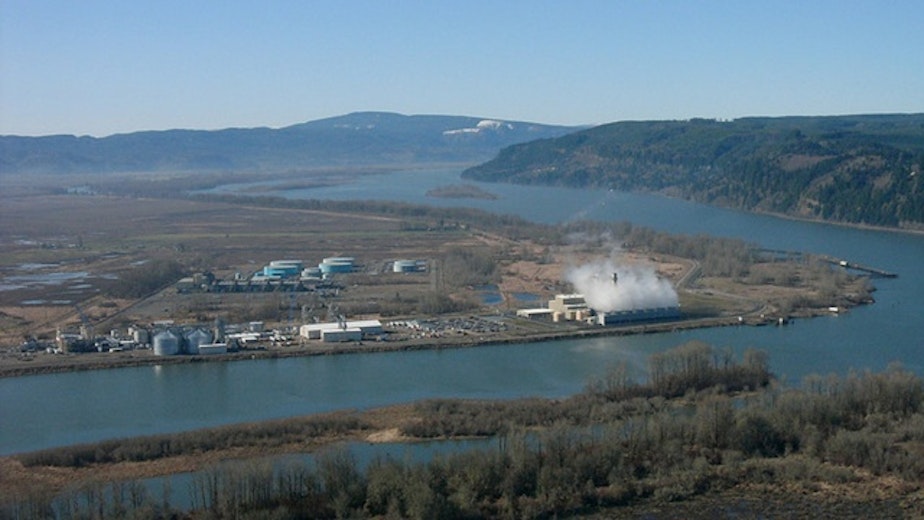Spill Plan For Columbia River Oil Terminal Lays Out Worst-Case Scenarios

The worst-case environmental scenario at an oil terminal on the lower Columbia River means 3.8 million gallons of crude spilling into sensitive wildlife habitat and shutting down a public drinking water intake, according to a draft response plan facility managers filed with the Oregon Department of Environmental Quality.
When DEQ stages drills for the Columbia Pacific Bio-Refinery terminal near Clatskanie, Ore., that is what it will simulate. But the likelihood of a tank rupture that large is very small, according to DEQ, and would entail major mechanical failure at a relatively new plant or something like a large flood or earthquake.
It’s rare enough that Scott Smith, spill contingency planner for DEQ and previously with the Coast Guard, hasn’t seen anything like it in his career. A much more likely spill, he said, would result from a hose rupture during transfer. Facility managers calculate such a spill could result in the loss of anywhere from 1,216 gallons to 121,590 gallons.
The facility’s plan is currently under review with the DEQ, which is accepting public comments until Feb. 10. So far, the agency has asked the port’s managers only for small clerical adjustments. The Coast Guard and the U.S. Environmental Protection Agency have already reviewed the document, but the port was beyond Oregon’s reach until Smith asked the legislature last year for the ability to review the plan.
The document also reveals the full capacity of the terminal and what chemicals it stores:
The Clatskanie terminal opened in 2008 as a plant to produce ethanol as a gasoline additive, but its original owners filed for bankruptcy less than a year later. The terminal began accepting rail shipments of Bakken crude in 2012, and last year Global Partners LP out of Massachusetts purchased the terminal for $95 million, based in large part on its potential as a crude oil facility, with plans to invest $70 million and increase its capacity to 34 trains per month.
That shift to storing and shipping crude oil is what prompted an update of the facility’s oil spill contingency plan according to state and federal rules. However, because Oregon DEQ has little authority over the rail industry, the agency can only regulate transfers made from the facility to barges. The document notes the facility is subject to oversight from the U.S. Environmental Protection Agency because it “is located at such a distance that a discharge from the facility could cause injury to fish and wildlife and sensitive environments or shut down a public drinking water intake.”
To prevent spills, the facility has secondary containment areas for all tanks that are at least as large as the tank capacity, plus extra room for precipitation. The site’s tanks are also outfitted with an alarm system, set to activate at 98 percent of capacity to prevent overfilling. Should a hose rupture while transferring oil to a barge, the facility workers can shut off flow within 30 seconds.
Tanks, piping and containments are visually inspected weekly. Floating roofs within the tanks are inspected annually.
According to the document, the facility “does not have any automated leak detection systems on its pipelines,” which is one of very few portions of the plan marked with an underline by DEQ. The state requires some form of leak detection but does not require it to be automated, Smith said, though it is a best practice.
Oregon does have strict requirements on spill response times, which Smith said the document fulfilled.
According to the document, within the first 30 minutes workers will remove anything that could ignite the oil and notify local emergency responders. Within the first two hours, any decontamination of workers will happen as well as any placement of boom or containment structures in an attempt to keep the spill in place.
The plan is available for viewing at the DEQ Portland office and could be available online as early as next week.Copyright 2014 EarthFix. To see more, visit http://earthfix.kuow.org.
